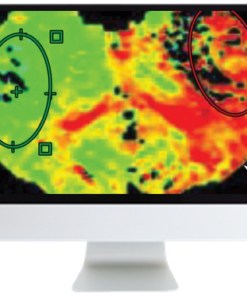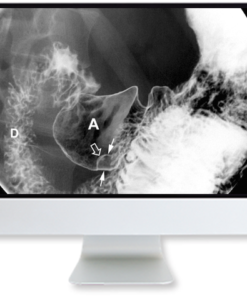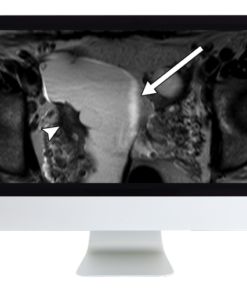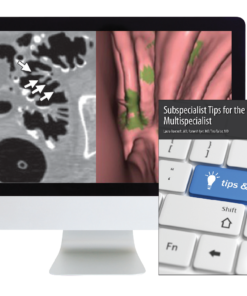How to Create Professional-Looking Video Ads: Tips and Best Practices
Start Using Video Arrs Now!
Are you looking for a way to improve your surgical skills? Look no further than Video Arrs! Video Arrs is an online platform that provides surgeons with the tools they need to stay up-to-date on the latest techniques and technologies. With our comprehensive library of videos, tutorials, and articles, you can quickly learn new skills and stay ahead of the curve. Plus, our interactive quizzes and assessments help you measure your progress and identify areas for improvement. So what are you waiting for? Start using Video Arrs today and take your surgical skills to the next level. Visit SurgeryBook.net to get started!
VIDEO MEDICAL
VIDEO MEDICAL
Code Stroke: What the Radiologist Needs to Know in the Changing Landscape of Acute Ischemic Stroke
VIDEO MEDICAL
VIDEO MEDICAL
VIDEO MEDICAL
VIDEO MEDICAL
VIDEO MEDICAL
VIDEO MEDICAL
VIDEO MEDICAL
VIDEO MEDICAL
VIDEO MEDICAL
VIDEO MEDICAL
VIDEO MEDICAL
VIDEO MEDICAL
VIDEO MEDICAL
VIDEO MEDICAL
VIDEO MEDICAL
VIDEO MEDICAL
VIDEO MEDICAL
VIDEO MEDICAL
VIDEO MEDICAL
VIDEO MEDICAL
Introduction
Creating professional-looking video ads is essential for businesses that want to stand out from the competition and reach their target audience. With the right tips and best practices, you can create high-quality video ads that will help you engage with your customers and increase your brand visibility. In this article, we'll provide you with some useful tips and best practices on how to create professional-looking video ads that will help you get the most out of your marketing efforts.
Establishing a Clear Goal for Your Video Ad
Establishing a clear goal for your video ad is essential to ensure that you are able to reach the right audience and achieve the desired results. A well-defined goal will help you create an effective video ad that resonates with your target audience and drives them to take action.
When setting a goal for your video ad, it’s important to consider what you want to accomplish. Do you want to increase brand awareness? Generate leads? Drive sales? Once you have identified your goal, you can begin to craft a message that speaks to your target audience and encourages them to take action.
It’s also important to consider the format of your video ad. Different formats work better for different goals. For example, if you’re looking to generate leads, a short explainer video may be more effective than a longer narrative-style ad. On the other hand, if you’re looking to drive sales, a product demonstration video may be more effective.
Once you’ve established a clear goal for your video ad, you can begin to develop a creative concept that will help you reach your target audience and achieve your desired results. Consider the tone, visuals, and messaging that will resonate with your target audience and encourage them to take action.
By establishing a clear goal for your video ad, you can ensure that you are creating an effective ad that resonates with your target audience and drives them to take action. With a well-defined goal, you can create an effective video ad that helps you reach your desired results.
Crafting an Engaging Script
Crafting an engaging script is a critical part of any successful film, television show, or play. It’s the foundation upon which all other elements of production are built. A well-crafted script can captivate audiences and draw them into the story, while a poorly written one can leave viewers feeling uninterested and disconnected.
The first step in crafting an engaging script is to create a compelling story. This means developing characters that are interesting and relatable, as well as creating a plot that is both unpredictable and believable. It’s important to ensure that the story has a clear beginning, middle, and end, and that it progresses logically from one scene to the next.
Once the story is established, the next step is to write dialogue that is natural and engaging. Dialogue should be realistic and reflect the personalities of the characters. It should also move the story forward and provide insight into the characters’ motivations and relationships.
In addition to writing dialogue, it’s important to consider the visual aspects of the script. This includes setting descriptions, camera angles, and other details that will help bring the story to life on screen. It’s also important to consider how the script will be edited, as this can have a major impact on the pacing and flow of the story.
Finally, it’s important to make sure that the script is properly formatted. This includes using the correct font size and margins, as well as ensuring that the dialogue is broken up into separate lines for each character. Proper formatting makes it easier for actors and directors to read and understand the script, and it helps to ensure that the story is told in the most effective way possible.
Crafting an engaging script is a complex process, but with careful planning and attention to detail, it’s possible to create a script that will captivate audiences and keep them coming back for more. By taking the time to develop a compelling story, write natural dialogue, and format the script correctly, writers can create scripts that will stand the test of time.
Choosing the Right Visuals
Choosing the right visuals for a project can be a daunting task. Visuals are an important part of any presentation, website, or other project, and they can make or break the overall look and feel of the project. It is important to choose visuals that are appropriate for the project and that will help to convey the message you are trying to get across.
When choosing visuals, it is important to consider the audience. Different visuals may be more effective for different audiences. For example, if you are creating a presentation for a business audience, you may want to use visuals that are professional and sophisticated. On the other hand, if you are creating a presentation for a younger audience, you may want to use visuals that are more fun and playful.
It is also important to consider the purpose of the visuals. Are you trying to illustrate a point? Are you trying to create a mood? Are you trying to show a process? Knowing the purpose of the visuals will help you choose visuals that are appropriate for the project.
In addition, it is important to consider the size and resolution of the visuals. If you are using visuals on a website, you will need to make sure that the visuals are optimized for web viewing. If you are using visuals in a printed document, you will need to make sure that the visuals are high-resolution and print-ready.
Finally, it is important to consider the overall aesthetic of the visuals. You want to make sure that the visuals fit with the overall look and feel of the project. Consider the colors, fonts, and other design elements that you are using in the project and make sure that the visuals complement them.
Choosing the right visuals for a project can be a difficult task, but it is an important one. Taking the time to consider the audience, purpose, size, resolution, and aesthetic of the visuals will help ensure that your project looks its best.
Utilizing Music and Sound Effects
Music and sound effects are powerful tools for creating an immersive experience in any form of media. From films to video games, music and sound effects can be used to set the tone, create tension, and evoke emotion.
Music is often used to establish a mood or atmosphere. It can be used to convey a sense of joy, sadness, suspense, or even horror. Music can also be used to emphasize certain moments or scenes, such as a character’s entrance or a climactic battle. In addition, music can be used to transition between scenes or to bridge two different parts of a story.
Sound effects are used to bring a scene to life. They can be used to create a realistic environment, such as the sound of birds chirping in a forest or the sound of a car engine revving up. Sound effects can also be used to add tension or excitement to a scene, such as the sound of a ticking clock or a gunshot.
When used together, music and sound effects can create a powerful and immersive experience. By carefully selecting the right music and sound effects, filmmakers and game developers can create a unique and engaging experience for their audience.
Optimizing Your Video Ad for Different Platforms
Optimizing your video ad for different platforms is an important step in ensuring that your message reaches the right audience. With the rise of digital media, it’s essential to tailor your video ad to the platform you’re using. Different platforms have different requirements and audiences, so it’s important to understand how to optimize your video ad for each one.
When optimizing your video ad for different platforms, there are several key elements to consider. First, you need to think about the length of your video. Different platforms have different time limits, so make sure your video ad fits within those parameters. Additionally, you should consider the aspect ratio of your video. Different platforms may require different aspect ratios, so make sure your video ad is formatted correctly.
Next, you should think about the content of your video ad. Different platforms have different audiences, so make sure your video ad is tailored to the platform you’re using. For example, if you’re targeting a younger demographic, you may want to use more vibrant colors and upbeat music. On the other hand, if you’re targeting an older demographic, you may want to use more muted colors and slower-paced music.
Finally, you should consider the placement of your video ad. Different platforms offer different placements, so make sure your video ad is placed in the most effective spot. Additionally, you should consider the type of ad you’re running. Different platforms offer different types of ads, such as pre-roll, mid-roll, or post-roll. Make sure you choose the right type of ad for the platform you’re using.
By following these tips, you can ensure that your video ad is optimized for different platforms. This will help you reach the right audience and maximize the effectiveness of your video






























